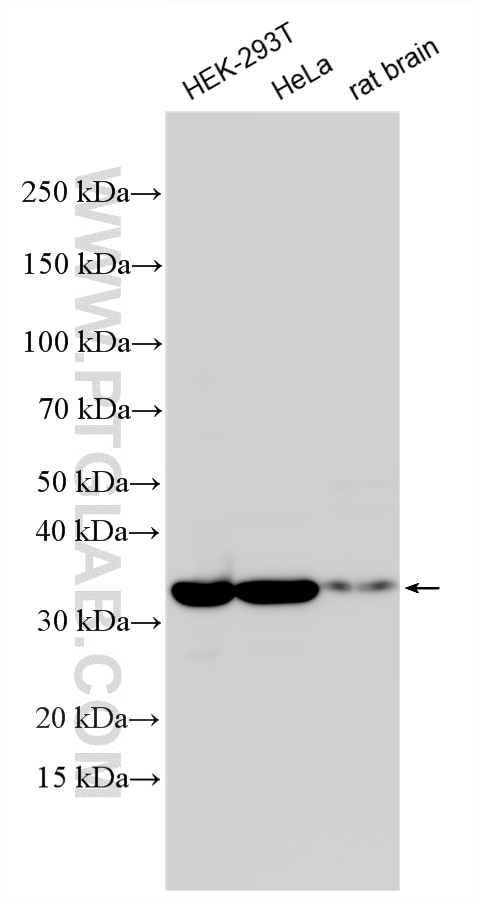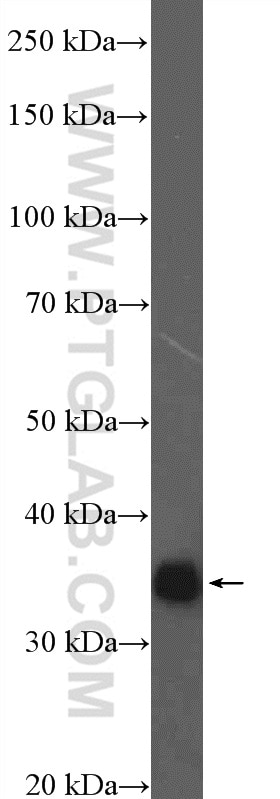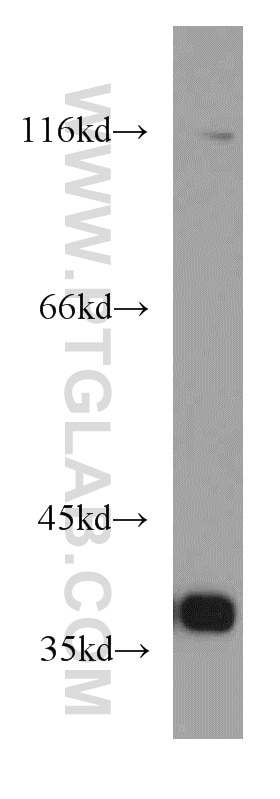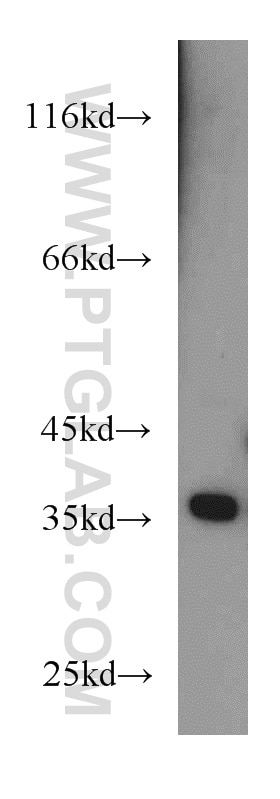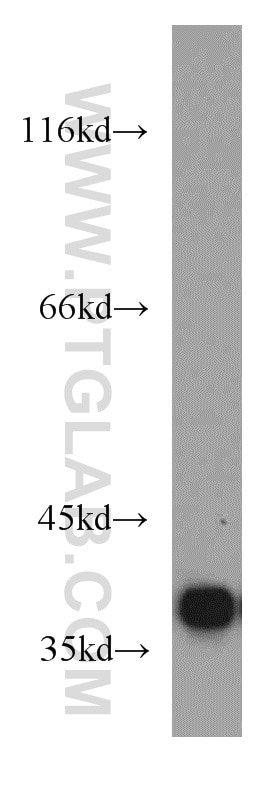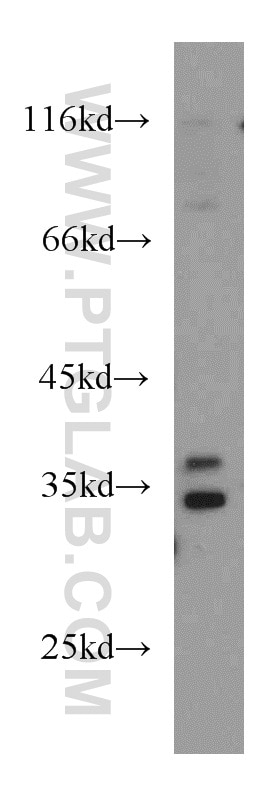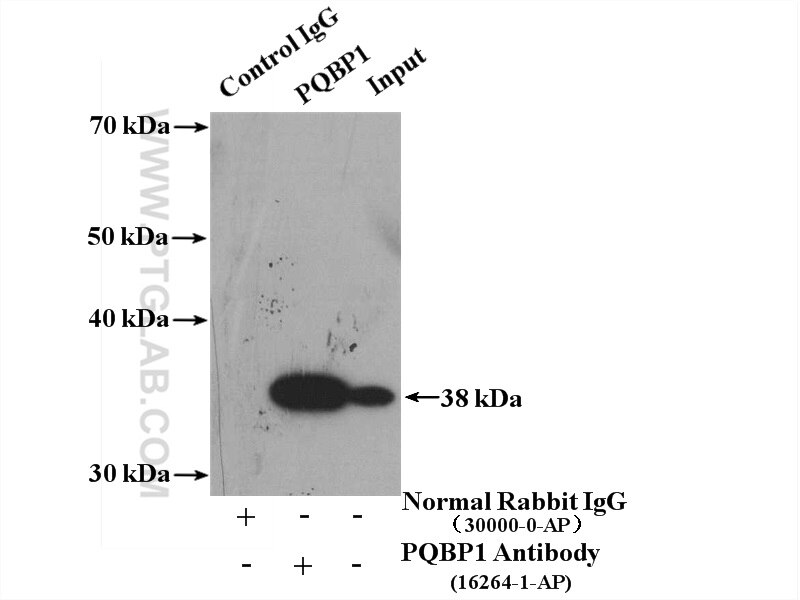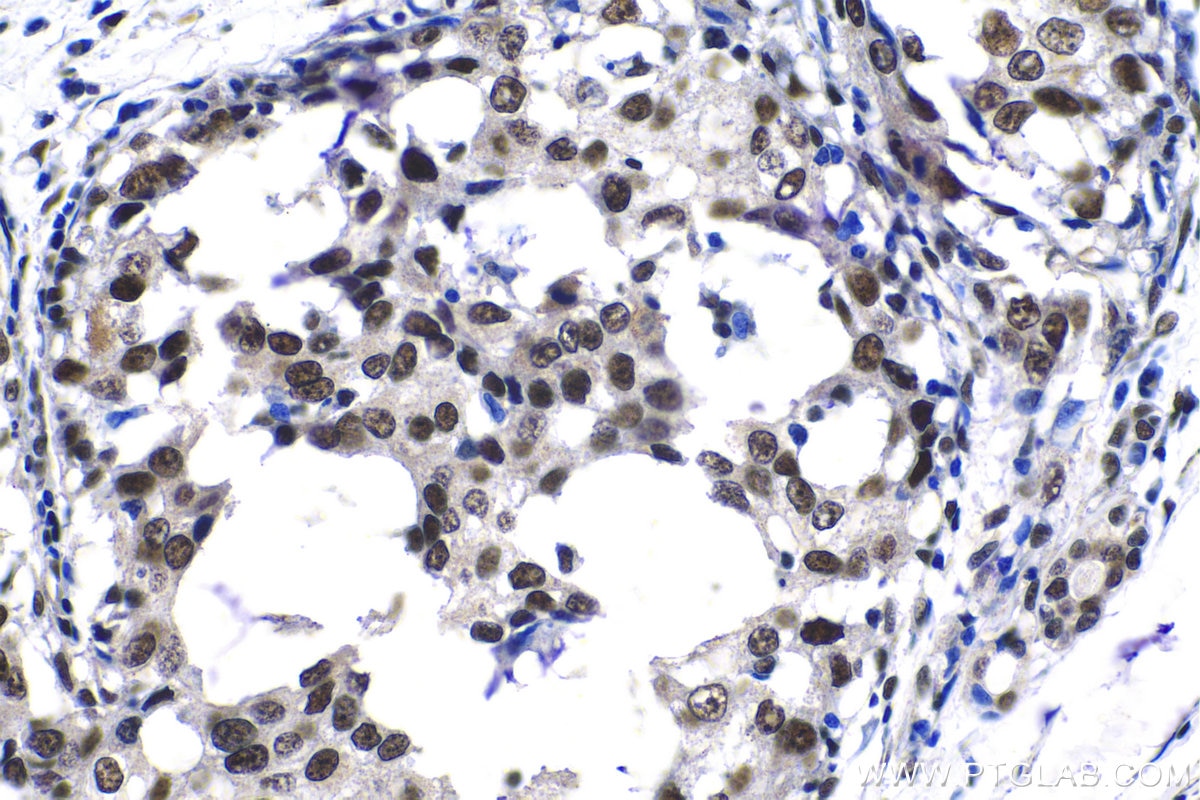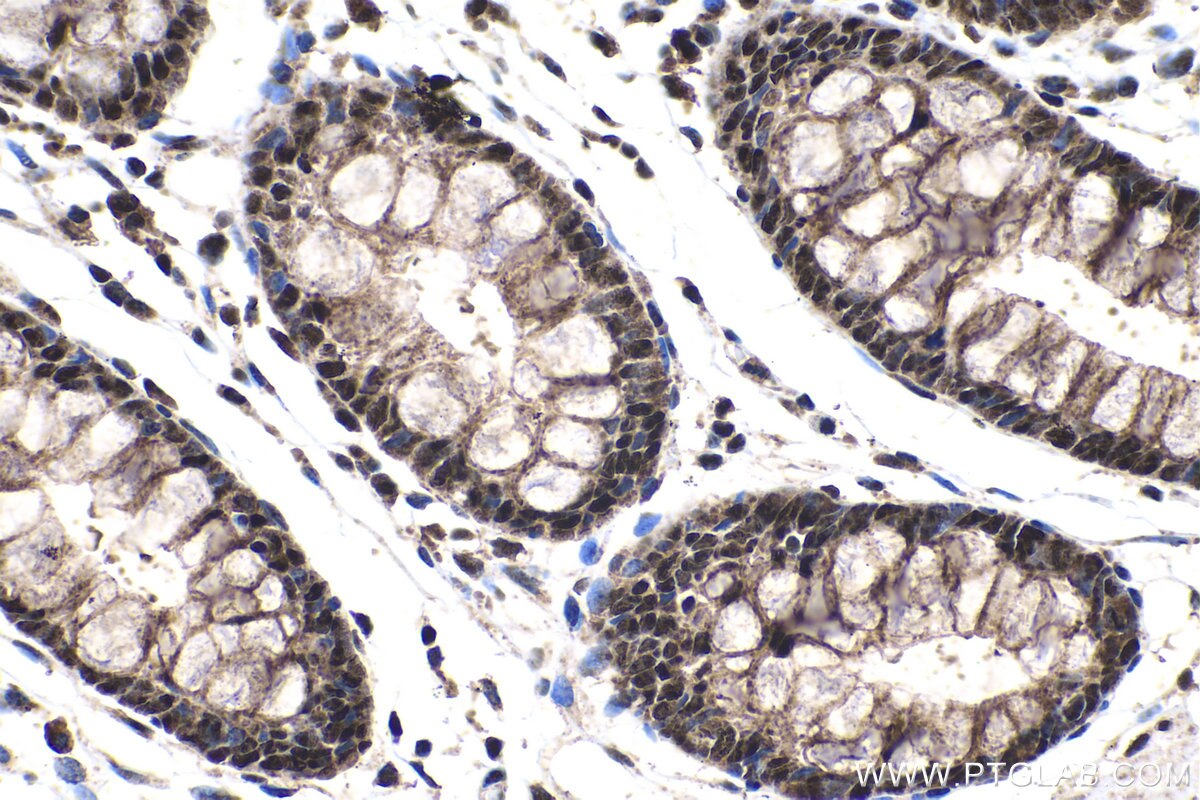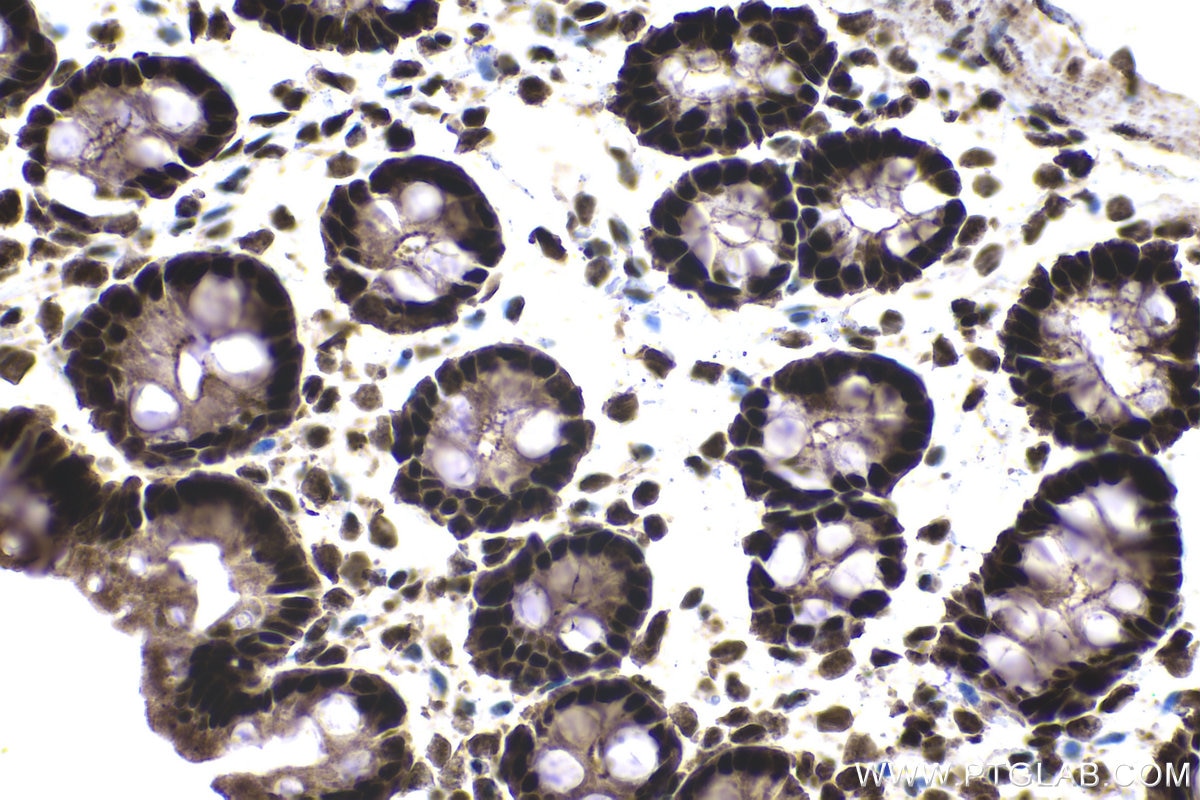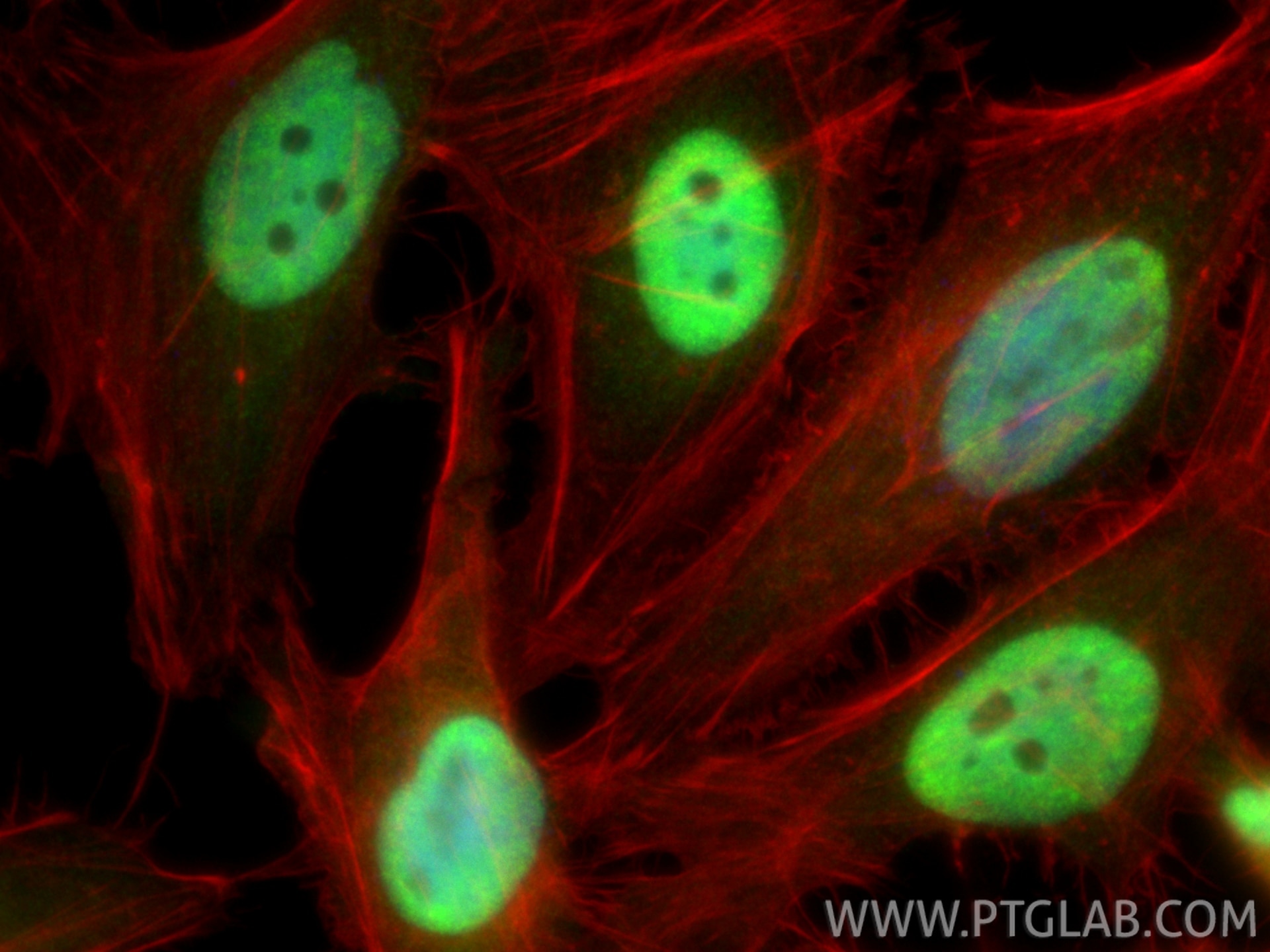PQBP1 Polyklonaler Antikörper
PQBP1 Polyklonal Antikörper für WB, IHC, IF/ICC, IP, ELISA
Wirt / Isotyp
Kaninchen / IgG
Getestete Reaktivität
human, Maus, Ratte
Anwendung
WB, IHC, IF/ICC, IP, ELISA
Konjugation
Unkonjugiert
Kat-Nr. : 16264-1-AP
Synonyme
Geprüfte Anwendungen
| Erfolgreiche Detektion in WB | HEK-293T-Zellen, HeLa-Zellen, Maushirngewebe, Maus-Skelettmuskelgewebe, Rattenhirngewebe |
| Erfolgreiche IP | Maushirngewebe |
| Erfolgreiche Detektion in IHC | humanes Mammakarzinomgewebe, humanes Kolongewebe, Ratten-Kolongewebe Hinweis: Antigendemaskierung mit TE-Puffer pH 9,0 empfohlen. (*) Wahlweise kann die Antigendemaskierung auch mit Citratpuffer pH 6,0 erfolgen. |
| Erfolgreiche Detektion in IF/ICC | HeLa-Zellen |
Empfohlene Verdünnung
| Anwendung | Verdünnung |
|---|---|
| Western Blot (WB) | WB : 1:5000-1:50000 |
| Immunpräzipitation (IP) | IP : 0.5-4.0 ug for 1.0-3.0 mg of total protein lysate |
| Immunhistochemie (IHC) | IHC : 1:500-1:2000 |
| Immunfluoreszenz (IF)/ICC | IF/ICC : 1:200-1:800 |
| It is recommended that this reagent should be titrated in each testing system to obtain optimal results. | |
| Sample-dependent, check data in validation data gallery | |
Veröffentlichte Anwendungen
| KD/KO | See 1 publications below |
| WB | See 3 publications below |
| IHC | See 1 publications below |
| IF | See 2 publications below |
| IP | See 2 publications below |
Produktinformation
16264-1-AP bindet in WB, IHC, IF/ICC, IP, ELISA PQBP1 und zeigt Reaktivität mit human, Maus, Ratten
| Getestete Reaktivität | human, Maus, Ratte |
| In Publikationen genannte Reaktivität | human, Maus |
| Wirt / Isotyp | Kaninchen / IgG |
| Klonalität | Polyklonal |
| Typ | Antikörper |
| Immunogen | PQBP1 fusion protein Ag9329 |
| Vollständiger Name | polyglutamine binding protein 1 |
| Berechnetes Molekulargewicht | 265 aa, 30 kDa |
| Beobachtetes Molekulargewicht | 30-32 kDa |
| GenBank-Zugangsnummer | BC012358 |
| Gene symbol | PQBP1 |
| Gene ID (NCBI) | 10084 |
| Konjugation | Unkonjugiert |
| Form | Liquid |
| Reinigungsmethode | Antigen-Affinitätsreinigung |
| Lagerungspuffer | PBS with 0.02% sodium azide and 50% glycerol |
| Lagerungsbedingungen | Bei -20°C lagern. Nach dem Versand ein Jahr lang stabil Aliquotieren ist bei -20oC Lagerung nicht notwendig. 20ul Größen enthalten 0,1% BSA. |
Hintergrundinformationen
PQBP1 (Polyglutamine-binding protein 1) is also named as NPW38 and JM26. PQBP1 senses extrinsic tau 3R/4R proteins by direct interaction and triggers an innate immune response by activating a cyclic GMP-AMP synthase (cGAS)-Stimulator of interferon genes (STING) pathway (PMID: 34782623). PQBP1 is abundantly expressed in the central nervous system during development. PQBP1 is a component of the precatalytic spliceosome (B complex) that is involved in splicing. PQBP1 was predominantly localized in the cell nucleus. PQBP1 is overexpressed in various cancer types including breast cancer, colon cancer, and glioblastoma (PMID: 38342602).
Protokolle
| PRODUKTSPEZIFISCHE PROTOKOLLE | |
|---|---|
| WB protocol for PQBP1 antibody 16264-1-AP | Protokoll herunterladen |
| IHC protocol for PQBP1 antibody 16264-1-AP | Protokoll herunterladenl |
| IF protocol for PQBP1 antibody 16264-1-AP | Protokoll herunterladen |
| IP protocol for PQBP1 antibody 16264-1-AP | Protokoll herunterladen |
| STANDARD-PROTOKOLLE | |
|---|---|
| Klicken Sie hier, um unsere Standardprotokolle anzuzeigen |
Publikationen
| Species | Application | Title |
|---|---|---|
Mol Cell PQBP1 promotes translational elongation and regulates hippocampal mGluR-LTD by suppressing eEF2 phosphorylation. | ||
Acta Neuropathol Transportin 1 accumulates specifically with FET proteins but no other transportin cargos in FTLD-FUS and is absent in FUS inclusions in ALS with FUS mutations. | ||
Cell Rep Dynamic regulation of alternative polyadenylation by PQBP1 during neurogenesis
| ||
